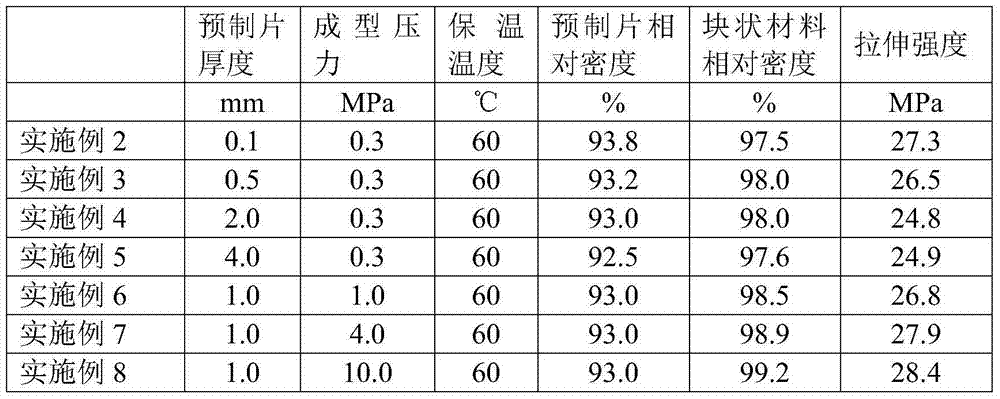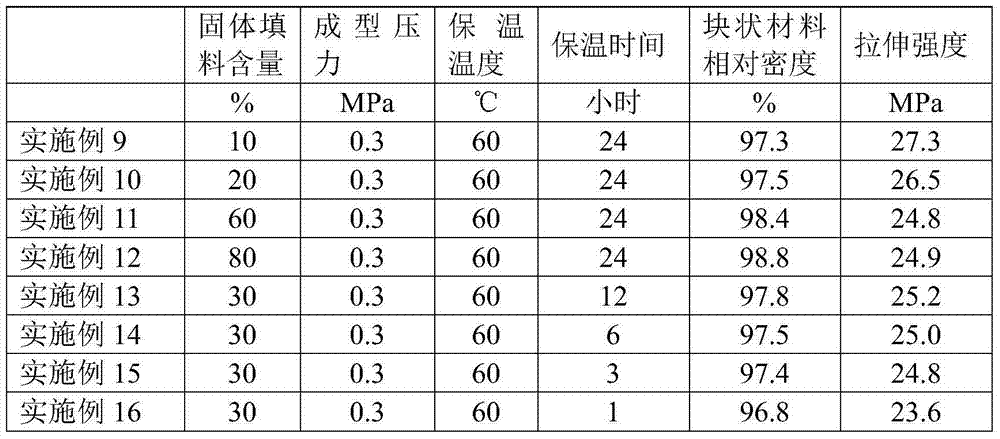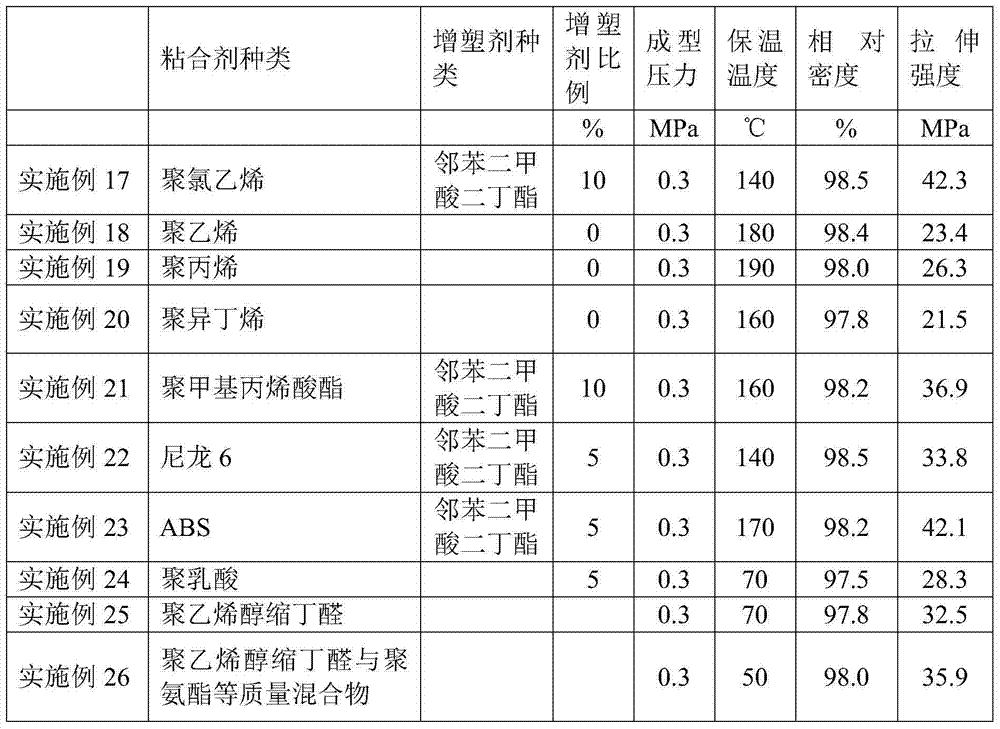Fusion forming method of large massive thermoplastic polymer composite material
A thermoplastic polymer and composite material technology, which is applied in the field of fusion molding of large-sized bulk thermoplastic polymer composite materials, can solve the problems of insufficient plasticization of materials, increased manufacturing costs, low production efficiency, etc. Effect of uniformity, weight and system reduction, lower molding pressure
- Summary
- Abstract
- Description
- Claims
- Application Information
AI Technical Summary
Problems solved by technology
Method used
Image
Examples
Embodiment 1
[0020] The polyurethane thermoplastic elastomer with a softening point of 70°C is selected as the polymer binder, and calcium carbonate powder with a particle size of less than 200 μm is added to the polyurethane thermoplastic elastomer as a solid filler, and the solid filler accounts for 30% of the mass of the finished composite material. % for batching, the calcium carbonate filler is evenly dispersed into the polyurethane thermoplastic elastomer by solvent kneading and mixing process, and then the solvent is driven off, and then the mixed polymer composite material is rolled into a thickness of 1.0mm sheet, the width of the sheet is controlled to 200-250mm. The density of the test flakes was 93.0% of the theoretical density.
[0021] Use a cutting mold to cut the pre-prepared sheet-shaped material into a disc with a diameter of 200mm, stack the discs together, and place them in the mold. When the thickness of the stack is controlled to 330mm, add a piece of thickness to one...
Embodiment 2-8
[0024] Using the same raw materials and molding process as in Example 1, the polyurethane thermoplastic elastomer with a softening point of 60-70°C is selected as the polymer binder, and aluminum oxide powder with a particle size of less than 200 μm is added to the polyurethane thermoplastic elastomer as a solid The filler is formulated according to the solid filler accounting for 30% of the mass percentage of the finished composite material. The calcium carbonate filler is evenly dispersed in the polyurethane thermoplastic elastomer by using the solvent kneading and mixing process, and then the solvent is driven off, and then the calendering process is used at 60 The mixed polymer composite material is calendered into sheets of different thicknesses at a temperature of ℃, and the width of the sheets is controlled to 200-250mm.
[0025] Using the same process as in Example 1 to fuse the sheet material into a block material, only changing the molding pressure for molding, the co...
Embodiment 9-16
[0029] Using the same raw materials and molding process as in Example 1, only changing the proportion of solid filler in the composite material and the heat preservation molding time of the block material, the density and mechanical properties of the block material prepared are shown in the table below.
[0030]
[0031] From the results of Examples 9-16, it can be seen that with the increase of the solid filler content in the prefabricated sheet, the tensile strength of the obtained bulk solid decreases slightly. The tensile strength and density decrease significantly with shortening of molding time. Using these parameters, a block composite material with a diameter of 200 mm and good comprehensive properties can be obtained.
PUM
| Property | Measurement | Unit |
|---|---|---|
| thickness | aaaaa | aaaaa |
| diameter | aaaaa | aaaaa |
| softening point | aaaaa | aaaaa |
Abstract
Description
Claims
Application Information
 Login to View More
Login to View More - R&D
- Intellectual Property
- Life Sciences
- Materials
- Tech Scout
- Unparalleled Data Quality
- Higher Quality Content
- 60% Fewer Hallucinations
Browse by: Latest US Patents, China's latest patents, Technical Efficacy Thesaurus, Application Domain, Technology Topic, Popular Technical Reports.
© 2025 PatSnap. All rights reserved.Legal|Privacy policy|Modern Slavery Act Transparency Statement|Sitemap|About US| Contact US: help@patsnap.com



